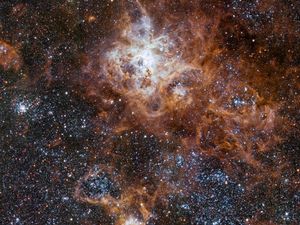ESO’s spectacular image shows the Tarantula Nebula in incredible detail
The image was taken in Chile using the VLT Survey Telescope.
Published

Astronomers have captured a breathtaking image of one of the brightest interstellar clouds of gas in the Large Magellanic Cloud located near the Milky Way in incredible detail.
Taken with the VLT Survey Telescope (VST) at the European Southern Observatory’s Paranal Observatory in Chile, the image shows the Tarantula Nebula at the top and its numerous neighbouring nebulae and star clusters.
Also known as the 30 Doradus, the Tarantula is the brightest star-forming region in the Local Group – which is made up of 54 galaxies, including the Milky Way.






